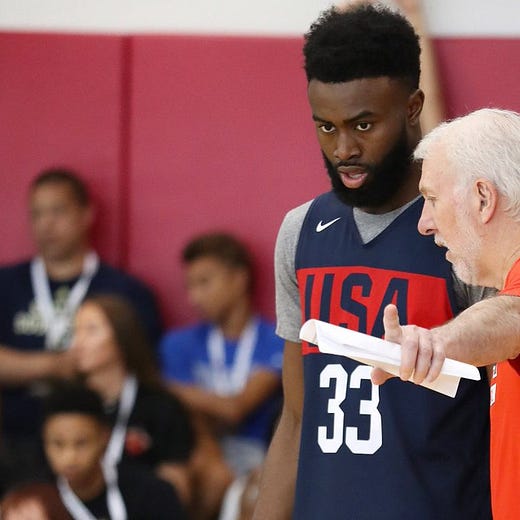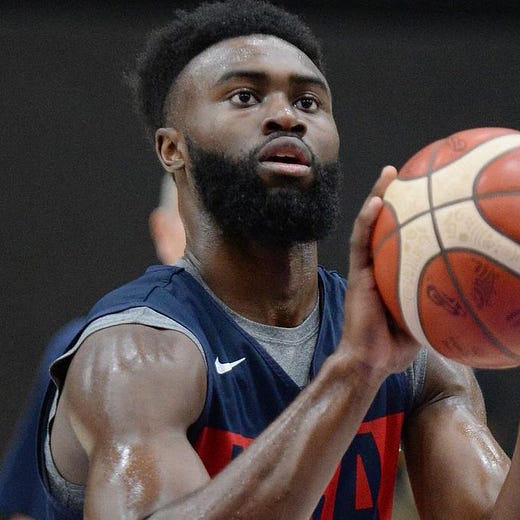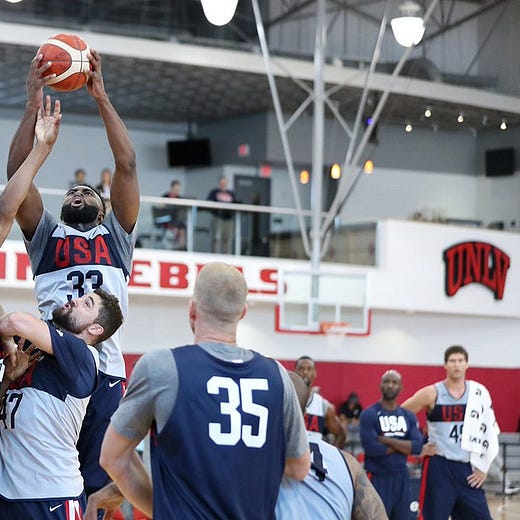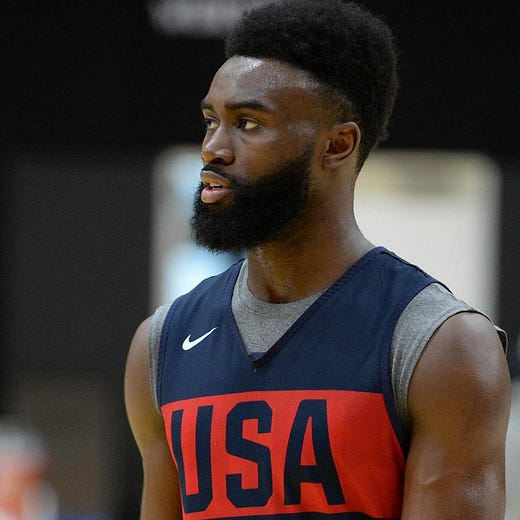2020 Tokyo Games postponement and its impact on Calympians and Cal sports
The COVID-19 pandemic will push back the summer Olympics by almost a year
We still don’t have a lot of information on when the world, not just the sports, might be back to “normal”. As more and more events from this spring and summer get canceled/postponed, the same fate was met by the Summer Olympics. The Tokyo Olympic Games will be postponed by essentially one full year until late July of 2021. Below are some speculations on how the Olympic postponement might impact our favorite Cal Olympians (“Calympians”) and the next school year of Cal non-revenue sports.
After (too) much deliberation, the International Olympic Committee (IOC) finally announced the postponement of the 2020 Tokyo Olympics games, originally scheduled to begin in late July 2020 to late July 2021, due to the ongoing COVID-19 pandemic. Athletes from around the world have generally supported this move, as it also allows them to participate in social distancing and not risk their own and other people’s healths in the meantime.
The new dates for the Tokyo 2021 Olympics will be July 23rd to August 8th - almost exactly a year after the original dates of July 24th to August 9th of 2020. This move should keep all the yet-to-take-place trials to occur at the typical time, just also one year later.
Athletes, coaches, fans, etc. can now look forward to the 2021 Tokyo Olympics with the hope of it being a potential celebratory moment by the world next summer on humanity’s triumph over this pandemic.
There are still a lot of details that will need to be worked out between now and then. A lot of it does depend on just if/when things will be back to normal - as people can travel freely again all over the world and to gather in large crowds again without worrying. The preliminary reports have indicated that all the events that have already had its qualifiers will keep those results (and rightfully so). Other Olympic qualifications that have been canceled/postponed will probably just take place about one full year after their original dates.
What is harder to gauge is how team sports, where countries have already qualified will maintain their lineups. One full calendar year is quite a long time for athletes of certain sports to remain in their prime. For example, USA softball has already announced its 2020 Tokyo roster which includes Cal alum Valeria Arioto. Could fellow Cal alum Jazmyn Jackson, who was one of the last cut, somehow make the team next year if she has a strong showing in the National Pro Fastpitch (IF there is indeed pro softball this year or next spring).
Additionally, a lot of athletes may also be in very different financial situations by 2021, particularly with their sponsors also losing money due to the pandemic-induced recession. There may be many unfortunate athletes from around the world who can’t afford to continue training for the 2021 Olympic games due to financial issues. National teams, outside of USWNT soccer, also often does not pay nearly as well as pro teams; former Cal Volleyball great and 2016 Rio Bronze medalist Carli Lloyd “retired” from the USA National Team last summer to play pro volleyball in Turkey. My speculations below will not factor in either of those factors since I obviously do not have any insights into the internal team politics nor athletes’ financial situations.
Cal athletes who should benefit
Alex Morgan, Cal women’s soccer alum, USA
The top striker for the United States Women’s National Team (USWNT) has not played a competitive match since the Women’s World Cup final. The Cal alum announced in September 2019 the bad news that she will miss the rest of that NWSL season with a knee injury that she picked up at the World Cup. Alex Morgan then announced in October of 2019 the great news that she was pregnant with her first child with husband, fellow Cal alum, and pro soccer player Servando Carrasco, but has always planned to be back for the 2020 Tokyo Olympic games, with her child due sometimes in April of 2020.
While that was certainly a strong possibility for a superwoman like Alex Morgan, who has continued her soccer training at full throttle during her first 7 months of pregnancy, she will now have significantly more time to get back to form after giving birth. She will also have more opportunities to train with a USWNT team that may be in transition after winning back-to-back World Cups.
Alex Morgan will be returning to a USWNT team that has a new head coach as Vlatko Andonovski has replaced Jill Ellis as the Team USA manager post World Cup. Nonetheless, the expectation is that Morgan will again be the featured top striker for Team USA when she’s back. No women’s national team has ever won the Women’s World Cup and the Olympics - which are scheduled for back-to-back years. USWNT won the 2012 Olympic Golds after losing the 2011 Women’s World Cup final to Japan. After winning the 2015 Women’s World Cup, USWNT was knocked out in the Round of 16 of the 2016 Rio Olympics via penalty kicks (when Alex Morgan did miss her PK).
Morgan, who will turn 32 by next summer, should still be in her prime. Currently tied for 9th with 107 international goals, Alex Morgan should finish her career as the 2nd most prolific goal scorer in US history. Morgan should be able to pass Mia Hamm’s 158 goals but Abbey Wambach’s 184 goals or Canadian Christine Sinclair’s final total (she just surpassed Wambach recently) may be out of reach.
For the rest of USWNT, an extra year might mean the retirements of Carli Lloyd (who outshine Morgan two World Cups ago and had picked up the slack in International play in 2020 with Morgan out) and/or Megan Rapinoe (who was tasked to take the penalties over Morgan last World Cup en route to winning the tournament’s Golden Boot). Should one or both of them retires or takes a less prominent role on the squad, the USWNT might be even more reliant on Alex Morgan for both her on-field performance and off-field leadership in the 2021 Tokyo Olympic games.
Reece Whitley, Ryan Hoffer, and Isabel Ivey, current Cal swimmers, USA
One of the cruelest sporting events is arguably the USA Swimming Olympic Trials. With the United States being the home of the best and deepest pool of aquatic talents in the world in most years, the precious Olympic game berths can only be earned in most events by the top two finishers (even if the 3rd place finisher may often be by far the 3rd fastest swimmer of that event in the world and the difference is merely 0.01 of a second). Only the 100m and 200m Free will take the top 6 finishers with the next 4 finishers outside the top 2 being relay only swimmers at the Olympic Games.
While the 2020 US Olympic Trials was speculated to be a coming-out party for a new generation of swimmers, we will have to wait one whole year until June of 2021 to figure out who will get to represent Team USA. The extra year should benefit a lot of the younger swimmers, like the three current Cal Bears that I have listed above.
Reece Whitley was expected to challenge for a spot in either the 100m or 200m Breaststroke, possibly at the expense of Calympian Josh Prenot, who trains daily with Whitley at Cal. The 6 foot 6 inch tall sophomore certainly should excel in the longer Olympic pool due to his size compares to the shorter college pools where he posted the top times in the country during the Pac-12 Championships: his 200y Breast time was the best mark in the country by over 1.5 second and he also owns the second-best 100y Breast time in the country this past season. Earning national attention since he was 16 year old, Whitley is a lot more mentally prepared for the Olympic trials this time around thanks to the time that he has spent in the Cal program.
Junior Ryan Hoffer faces far more competition in the sprint and fly disciplines, but he also should have been in the mix this June in the original schedule for an Olympic spot. With an extra year of training at Cal (whenever the student-athletes can continue their training after the COVID-19 pandemics), the recently named Pac-12 Male Swimmer of the Year in Hoffer should improve his chance to make Team USA even more in 2021 after his senior season. Hoffer has already confirmed that he won’t be taking an “Olympic redshirt” year in 2021, which is typical of most Calympians.
Sophomore Isabel Ivey on the Cal women’s team is a versatile swimmer that greatly improved her swims across all disciplines after her first full year of training in Berkeley this past year. Ivey graduated high school early to help out Cal in the 2019 NCAA Championships. She could be an Olympic threat in the backstroke and/or fly events where she will likely race for those precious Olympic berths against Cal alum Kathleen Baker, Amy Bilquist, and Katie McLaughlin (the latter two were her Cal teammate in 2019).
Given the depth and talent of Cal swimming, this shortlist is obviously not exhaustive. Several other Golden Bears have the ability to drastically improve their Olympic and/or medalling chances with the extra year of preparation time - particularly the younger swimmers whose bodies are still developing. Another Cal Bear to look out for is incoming freshman Isabelle Stadden who could pull a Rachel Boostma (another fellow Cal Bears from the midwest) to earn a shocking Olympic berth in backstroke; Boostma edged Natalie Coughlin for the 2nd spot behind Missy Franklin in 2012.
Even factoring the uncertainties in training this summer due to social distancing, Cal swimmers should greatly benefit from Women’s head coach Teri McKeever’s past experience as the head women’s Team USA Olympic swimming coach for the 2012 London games and Men’s head coach Dave Durden’s current double duty as the head men’s Team USA Olympic swimming coach for the 2021 Tokyo games.
Jaylen Brown, Cal men’s basketball alum, USA
The 23-year-old Jaylen Brown was nearly a NBA all-star in his breakout 2019-20 NBA season with the Boston Celtics. If he continues his ascension toward basketball superstardom next season, Jaylen Brown just might force his way onto the Team USA roster for the 2021 Olympic Games. Jaylen Brown improved his NBA stats from 13.0 points per game, 4.2 rebounds per game, 1.4 assists per game with a field goal percentage of 0.465 in 2018-19 season to 20.4 ppg, 6.4 rpg, 2.2 apg, with a fg% of 0.490 in the currently halted 2019-20 season.
Brown played for Team USA during the 2019 World Cup last summer. That US team that finished 7th in the world lacked a lot of star power who are more open to play in the Olympic games. Nonetheless, Jaylen Brown is one of the 44 players on the preliminary USA roster for the next Olympics. The extra year does give Brown more time to blossom as a basketball player. While still a very much longshot to make the team, Brown could overtake Jimmy Butler, Bradley Beal, etc. for a wing (shooting guard/small forward) roster spot on 2021 version of the Dream/Redeem Team.
Cal athletes who may lose out on being an Olympian
Nathan Adrian and Tom Shields, Cal swimming alumni, USA
On the flip side of young swimmers having better odds to become first time Calympians, some of our past Calympian favorites will have longer odds to return to the Olympic games due to the extra year of time.
3x Calympian Nathan Adrian beat testicular cancer in 2019 and he seeks a 4th Olympic game, even if it’s just as a relay specialist. Adrian will have to fend off a new wave of USA sprint stars led by Florida alum and 2016 Rio Olympian Caeleb Dressel, who have dominated the 2017 and 2019 World Championships in addition to the NCAA in the past Olympiad. Adrian will be 32 years old by July 2021.
Tom Shields made his Olympic debut in 2016. After some disappointments in international competitions, Shields had a strong season in the debut year of International Swimming League last year for the LA Current, winning a few 100m and 200m Fly races. Shields will be 30 years old by July 2021.
What may help these wily swimming veterans is their mental strength facing adversity due to this COVID-19 pandemic. Nathan Adrian has advice to younger athletes on the postponement.
Knowing what it takes to be an Olympian, these more seasoned Cal Bears may be better prepared than some of the young cubs in being physically distanced from the normal Cal training environment. Sadly, there just aren’t enough Team USA spots for all the deserving Golden Bears.
Andrew Vaughn, Cal baseball alum, USA
Cal alum Andrew Vaughn was the main 1st baseman with the Team USA squad that tried to earn an Olympic berth this past winter at the Premier 12. While USA fell short, they will have two more shots to qualify for the 2021 Tokyo games in the anticipated return of baseball and softball. Should USA earn an expected Olympic berth, what may hurt Andrew Vaughn’s chance to become a Calympian may just be his own exceptional successes.
While MLB does NOT allow their players to participate in the Olympics, those who are not on a team’s 40 men roster are free to partake. Only drafted last summer in the 2019 draft, Andrew Vaughn does not need to be added to the 40 men roster this upcoming offseason. Nonetheless, Vaughn had a great spring training as a non-roster invitee this March, slashing 0.304/ 0.448/ 0.522 with 1 homer and 2 doubles in 23 at-bats, before it was stopped. IF we do have some baseball in 2020, expect Vaughn to continue his fast ascend through the Chicago White Sox system. The White Sox did resign Cuban 1st baseman Jose Abreu and then added DH Edwin Encarnacion this past offseason, but don’t count out Vaughn to possibly make his debut in 2021, if the opportunity presents itself early next summer. An ideal situation would be for Andrew Vaughn to star in the Olympics and then make his MLB debut as a September call-up in 2021.
Impacts to Cal sports in 2021
We don’t know if we will have sports back this fall. There is a chance that fall sports will be canceled or postponed until the spring of 2021 (though there will be a lot of facility issues if that’s the case).
While Football and Basketball are money makers for schools, a lot of the Olympic sports do play to small crowds. Could the typically 50,000+ large crowds of football games be banned this fall while 500 people for volleyball be allowed? Might sports be played with no fans since the schools and NCAA would claim that their priority is preparing these athletes rather than to earn money? We shall have more answers to these questions as the world evolves to deal with this pandemic.
Traditionally, NCAA women’s water polo has been the one collegiate sports most impacted by the summer Olympic games. All the top players have international responsibilities and take a red-shirt year off to train with their international teams. For this 2020 season, Cal lost three key players to international duty - Emma Wright with Canada, Kitty Lynn Joustra with the Netherlands, and Elli Protopapas with Greece. Will they need to take yet another collegiate season off next spring?
Fortunately, most of the Calympians should again be from individual sports like swimming, hammer throwing, and various forms of rowing where they can mostly train with their Cal teammates and possibly still compete in the collegiate championships during the 2020-21 school year, hopefully when collegiate sports return to normal.
We here at Write for California will do our best to keep you updated on the latest Calympic news leading up to the 2021 Tokyo games next summer.
Stay safe and Go Bears!
















Some international Bears are also obviously still also in the mix, just from athletes I follow:
Hong Kong swimmer Stephanie Au should be swimming in her 4th olympics after 2016 she carried the HK Flag in the opening ceremony. She's qualified for the 100m backstroke.
Singaporean Quah Zheng Wen has also qualified in the men's 100m backstroke even though that's not his strongest event.
Thank you for this comprehensive post about Calympians!